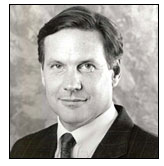Districts That Work: What the Research Says
 In
September of 2003, Michael Casserly, Executive Director
of the Council of Great City Schools, spoke to the Superintendents
Literacy Leadership Summit sponsored by Scholastic. Below
are excerpts of his remarks describing the Council's Achievement
Gaps Task Force research study. In
September of 2003, Michael Casserly, Executive Director
of the Council of Great City Schools, spoke to the Superintendents
Literacy Leadership Summit sponsored by Scholastic. Below
are excerpts of his remarks describing the Council's Achievement
Gaps Task Force research study.

All of us are facing challenges that public education has
never faced before. I can't think of another institution —
public or private — that is under more pressure to improve
than urban public schools. We are being told to produce results
or get out of the way. We are being told to improve or see
the public go somewhere else. We are being told to be accountable
for what we do or let someone else do it.
When Congress passed No Child Left Behind a couple of years
ago, it did so not as an act of nurturance. It did so out
of frustration — frustration at not seeing the progress
they expected. And much of that frustration was aimed at urban
America where so much of the debate about reform converges.
One of the scary things about No Child Left Behind is that
it required not only universal proficiency, but mandates that
we improve our whole systems. But if you look around at the
research, there is not much to serve as a roadmap for how
to get gains at the scale that NCLB and the public are demanding.
There is a lot of research on what it takes to turn around
individual schools, or pockets of schools. And there is a
lot of research on individual programs, strategies, and groups
of students. But almost all of this work ultimately concludes
that we don't know how to take what we know works in miniature
and apply it at a larger, systems level.
So we at the Council of Great City Schools started asking
ourselves whether any big city school systems were improving
at the scale the public was demanding - and then asking the
question, "How did they do it?"
We went looking for cities that
- Had improved in all grades in reading and math on their
state assessments
- Had improved over at least three years
- Had improved faster than the state overall
- Had narrowed racially-identifiable achievement gaps.
We looked at average scores and we looked at the percentage
of students scoring at the proficiency level districtwide
and by group. We eventually settled on studying Houston, Charlotte,
Sacramento, and some portions of the Chancellor's District
in New York City.
Our research question was this: "What do these districts
do that others don't do?" The answer to our research questions
came in two parts. The first was political and the second
was strategic.
Pages 1 • 2
• 3
|